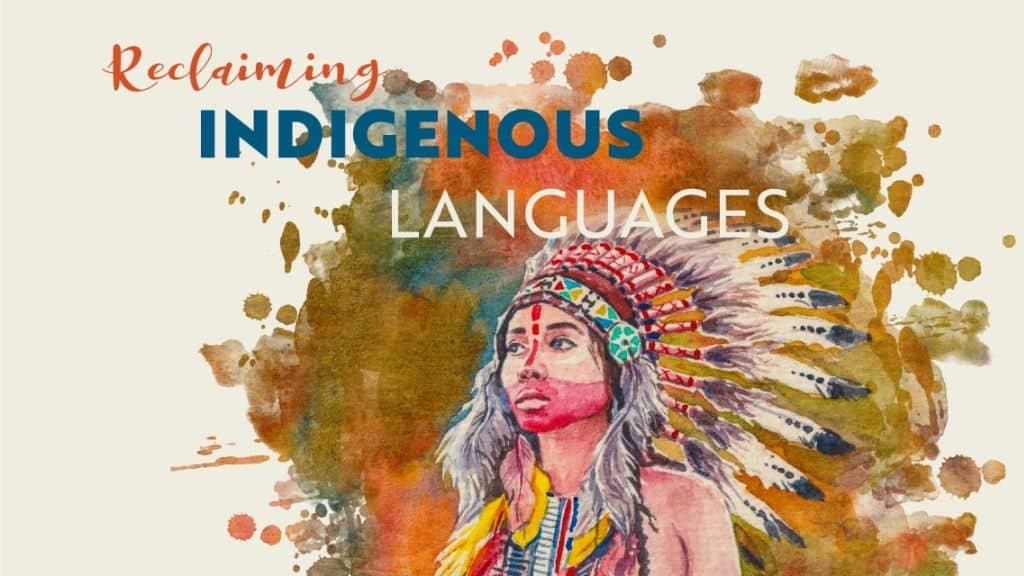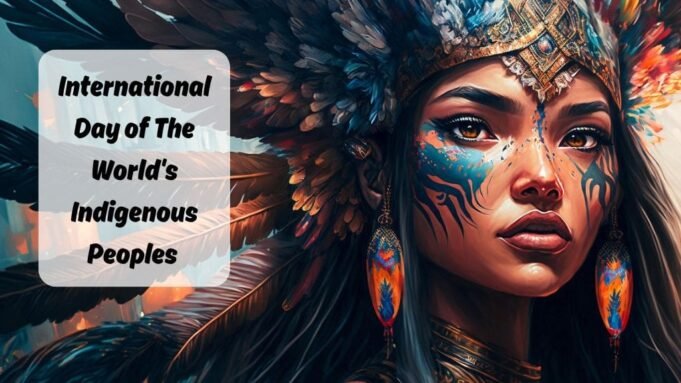International Day of the World’s Indigenous Peoples is observed every year on August 9 to honor Indigenous communities worldwide, recognize their cultural heritage, and raise awareness about their rights and ongoing challenges. Indigenous Peoples represent over 5,000 distinct cultures, speak the majority of the world’s languages, and live in 90 countries, yet they make up 15% of the world’s poorest populations.
This international day marks the anniversary of the first UN Working Group meeting on Indigenous Populations in 1982. It spotlights key issues like land rights, language preservation, and the autonomy of groups in voluntary isolation. In this article, I will share important facts, address major questions, and highlight the global significance of this important observance.
When is International Day of The World’s Indigenous Peoples 2025?
International Day of the World’s Indigenous Peoples 2025 will be observed on Friday, August 9, 2025. This annual day was officially designated by the United Nations General Assembly in 1994 under Resolution 49/214. The date honors the first meeting of the UN Working Group on Indigenous Populations, held on August 9, 1982, in Geneva. The 2025 observance will spotlight critical issues facing Indigenous communities, including cultural preservation, land rights, and protection of groups in voluntary isolation.
Each year, this day brings global attention to Indigenous voices, knowledge systems, and their contributions to sustainable development, language diversity, and climate resilience. UN agencies, NGOs, and Indigenous-led organizations typically host panels, cultural events, and policy discussions to mark the occasion.
What is the History of the International Day of The World’s Indigenous Peoples?
The history of International Day of the World’s Indigenous People traces back to 1982, when the United Nations Working Group on Indigenous Populations held its first session in Geneva. This milestone led to deeper discussions about Indigenous rights at an international level. In 1994, the UN General Assembly formally established August 9 as the official day to recognize and support Indigenous Peoples globally.
This followed years of advocacy from Indigenous leaders who called for global recognition of their cultural identity, traditional land rights, and political autonomy. The day also aligns with the adoption of the UN Declaration on the Rights of Indigenous Peoples (UNDRIP) in 2007, which remains a guiding framework for safeguarding their dignity, land, and cultural survival.
Related: National Ice Cream Sandwich Day
Why is International Day of the World’s Indigenous Peoples Celebrated Globally?
International Day of the World’s Indigenous Peoples is celebrated globally to raise awareness of the social, cultural, economic, and political issues Indigenous communities face, while also recognizing their contributions to humanity. Indigenous Peoples are stewards of biodiversity, languages, traditional medicine, and ecological knowledge systems.
Despite being home to over 476 million people across 90 countries, they represent some of the most marginalized populations. This day aims to promote respect for their rights, highlight the importance of cultural preservation, and push for meaningful action on land protection, language revitalization, and environmental justice.
The observance reminds the world that sustaining Indigenous heritage is essential for both human diversity and the planet’s future.
How can we Celebrate International Day of the World’s Indigenous Peoples?
International Day of the World’s Indigenous Peoples can be celebrated through respectful, awareness-driven actions that support Indigenous communities and honor their cultures. Individuals can attend virtual or in-person events hosted by Indigenous-led organizations or UN agencies. Schools can host classroom discussions, show documentaries, or invite Indigenous speakers to share their perspectives.
Social media campaigns using educational content and verified Indigenous sources help spread awareness globally. NGOs can launch fundraising drives to support land protection or language revitalization projects. Reading and sharing Indigenous-authored books, visiting cultural exhibitions, or learning about the significance of treaties and territorial rights also contribute to meaningful observance. The goal is to center Indigenous voices and educate others about their rights and resilience.
Related Read: National Mustard Day
What are Meaningful Activities to Honor Indigenous Peoples on August 9?
Several meaningful activities can be organized on August 9 to honor Indigenous Peoples in culturally respectful ways. These include:
- Hosting storytelling sessions with Indigenous elders or knowledge keepers.
- Organizing art exhibits that feature Indigenous craftsmanship, photography, or painting.
- Supporting Indigenous-owned businesses, artists, or cooperatives.
- Streaming documentaries about land rights, Indigenous women, or language preservation.
- Participating in workshops on traditional ecological practices or cultural protocols.
- Volunteering with organizations focused on legal advocacy or language education.
- Sharing Indigenous-created content across digital platforms to amplify their voices.
These activities foster cultural appreciation, support community-led development, and promote the preservation of Indigenous heritage and knowledge systems.
How Indigenous Peoples Safeguard Biodiversity and the Planet?
Indigenous Peoples play a vital role in protecting biodiversity and natural ecosystems. Although they make up less than 6% of the global population, they steward 22% of the Earth’s land surface, including many of the planet’s most ecologically intact regions. Their traditional knowledge systems, sustainable land-use practices, and spiritual relationships with nature contribute to long-term conservation.
For example, in the Amazon Basin, territories under Indigenous governance show significantly lower deforestation rates than surrounding areas. Protecting Indigenous land rights directly correlates with preserving forests, rivers, and wildlife habitats. Their role is especially crucial in the context of climate change, as their environmental stewardship helps regulate carbon cycles, conserve medicinal plants, and preserve critical ecological zones.
Read More: National Frozen Custard Day
What Are the Major Challenges Faced by Indigenous Communities Today?
Indigenous communities face multiple systemic challenges rooted in historical colonization, forced displacement, and ongoing discrimination. One of the most pressing issues is land dispossession, as governments and private industries often exploit Indigenous territories for mining, logging, or agriculture without consent. This undermines both their cultural survival and environmental sustainability.
Language loss is another concern, with many Indigenous languages endangered due to assimilation policies and a lack of educational support. Healthcare disparities are common, including limited access to medical services and exposure to diseases, especially in remote areas. Indigenous Peoples also experience high poverty rates, legal exclusion, and political underrepresentation. These challenges demand legally protected rights, cultural recognition, and fair inclusion in policy-making.
Who are Indigenous Peoples in Voluntary Isolation and Initial Contact?
Indigenous Peoples in voluntary isolation and initial contact are communities that intentionally avoid interaction with the outside world. These groups live in remote regions such as the Amazon rainforest (in Brazil, Peru, and Ecuador), parts of Papua New Guinea, and India’s Andaman Islands. They rely on hunting, gathering, and traditional ecological knowledge to survive, making them highly dependent on the integrity of their environment.
Because of their isolation, they are extremely vulnerable to disease, especially from common infections for which they have no immunity. Unauthorized contact, deforestation, or development in their territories can lead to irreversible harm or even the extinction of entire groups. Respecting their autonomy and protecting their lands are essential to their survival and the conservation of biodiversity.
Read Also: National Raspberry Cream Pie Day 2025
How Does Indigenous Knowledge Support Sustainable Development?
Indigenous knowledge systems are deeply rooted in local ecosystems and have sustained communities for generations. This knowledge contributes directly to sustainable development through climate-resilient agriculture, biodiversity protection, and natural resource management. For instance, traditional rotational farming, seed preservation, and water conservation practices reduce environmental impact while ensuring food security. In coastal and forested regions, Indigenous knowledge guides flood prevention and soil restoration.
The United Nations and UNESCO have acknowledged the role of Indigenous Peoples in achieving the Sustainable Development Goals (SDGs), especially in areas like health, education, climate action, and gender equality. Integrating Indigenous science with modern systems creates more inclusive and effective strategies for long-term environmental and cultural sustainability.
What Role do Indigenous Women Play in Preserving Culture and Communities?
Indigenous women are central to the transmission of language, cultural values, and ancestral knowledge within their communities. They often serve as custodians of traditional medicine, ritual practices, and oral histories, playing a critical role in cultural continuity. In many societies, Indigenous women also manage agriculture, seed saving, and food systems, ensuring local food sovereignty.
Despite these vital contributions, they frequently face multiple layers of discrimination, including gender-based violence, political marginalization, and economic exclusion. Global Indigenous networks have emphasized the need for their inclusion in decision-making and policy development. Strengthening the rights of Indigenous women helps protect their communities, supports climate adaptation efforts, and advances the preservation of cultural identity for future generations.
Read Also: National White Wine Day
How Does Technology Help Preserve Indigenous Languages and Culture?

Technology plays an increasingly important role in preserving Indigenous languages and culture, especially in the face of rapid language loss and cultural assimilation. Mobile apps, digital dictionaries, and audio-visual archives are being developed to document endangered languages and support intergenerational learning. Platforms like YouTube and podcasts allow Indigenous youth to share stories, songs, and traditions, helping reconnect communities with their heritage.
Initiatives such as UNESCO’s Local and Indigenous Knowledge Systems (LINKS) and the International Decade of Indigenous Languages (IDIL 2022–2032) support digital preservation. Technology also aids in mapping ancestral lands, documenting cultural practices, and sharing environmental knowledge, ensuring Indigenous voices are represented and accessible in the digital space.
International Day of the World’s Indigenous Peoples dates: 2026, 2027, 2028, 2029, 2030
Here are the upcoming dates for observing International Day of the World’s Indigenous Peoples:
| Year | Day | Date |
| 2026 | Sunday | August 9 |
| 2027 | Monday | August 9 |
| 2028 | Wednesday | August 9 |
| 2029 | Thursday | August 9 |
| 2030 | Friday | August 9 |
5 Important Facts about International Day of The World’s Indigenous Peoples
- Observed every year on August 9 to commemorate the first UN Working Group meeting on Indigenous Populations held in 1982.
- Over 476 million Indigenous Peoples live across 90 countries and represent more than 5,000 cultures and 7,000 languages.
- The UN officially declared the day in 1994, under General Assembly Resolution 49/214.
- Each year, the UN highlights a theme such as Indigenous women’s leadership, land rights, or language preservation.
- Indigenous communities protect 22% of global land and are key to biodiversity, climate action, and cultural diversity worldwide.
To Know More: National Smores Day
Frequently Asked Questions (FAQs)
Here you can find a few commonly asked questions that you may need to know. Let’s check them out.
Who started International Day of the World’s Indigenous Peoples?
The United Nations General Assembly established the day in 1994 through Resolution 49/214, based on recommendations from the UN Working Group on Indigenous Populations.
What is the main purpose of this day?
It aims to promote and protect the rights of Indigenous Peoples while celebrating their cultural, linguistic, and environmental contributions to global society.
How many Indigenous Peoples are there worldwide?
An estimated 476 million Indigenous individuals live in over 90 countries, representing thousands of cultures and languages.
What is the UNDRIP?
The UN Declaration on the Rights of Indigenous Peoples is a key international document adopted in 2007, outlining the rights of Indigenous Peoples to self-determination, land, and cultural identity.
Why is protecting Indigenous land important?
Protecting their territories helps preserve biodiversity, fight climate change, and sustain vital cultural knowledge systems.
Conclusion
International Day of the World’s Indigenous Peoples stands as a global call to recognize, respect, and uphold the dignity, rights, and contributions of Indigenous communities. Observed each year on August 9, this day highlights both the richness of Indigenous cultures and the urgent need to address the injustices they continue to face.
From preserving languages and protecting sacred lands to leading sustainable development, Indigenous Peoples are key to a more just and ecologically balanced future. Honoring their voices is not only an act of solidarity—it is essential for global diversity and resilience.















